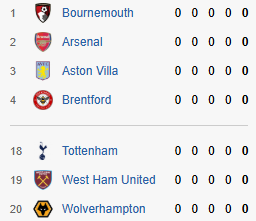Live Sports Streaming: The Technologies Behind the Magic
In today’s fast-paced digital world, watching live sports isn’t just about catching the game anymore—it’s about experiencing every play, every cheer, and every heart-pounding moment in crystal-clear detail, no matter where you are. This amazing experience is powered by a complex blend of technologies that work together to deliver a seamless, high-quality stream right to your screen. In this article, we’re going to dive into the fascinating world behind live sports streaming, exploring the key technologies, architectures, and innovations that make it all possible. Whether you’re a sports fan, a tech enthusiast, or just curious about what happens behind the scenes, grab a seat and let’s break it down in a friendly, conversational way.
The Power of Live Sports Streaming
Before we get into the nitty-gritty details, let’s set the stage. Live sports streaming has taken the traditional viewing experience to a whole new level. Gone are the days when you had to wait for a game to air on a fixed schedule. Instead, you can now watch your favorite teams and athletes in real time on your smartphone, tablet, or smart TV. This convenience is not just about accessibility—it’s about creating an immersive, interactive experience that draws you closer to the action.
At its core, live sports streaming is all about delivering video content over the internet in real time. But behind this seemingly simple concept lies an intricate web of technologies that ensure you get a smooth, uninterrupted stream every time you click “play.”
The Backbone of Live Streaming: Key Technologies
Let’s start with the building blocks that make live sports streaming possible. There are several critical technologies at play, and understanding them helps you appreciate just how much work goes into delivering your favorite game to you without a hitch.
1. Codecs: Compressing and Decompressing Video
Imagine trying to send a high-resolution video file over the internet without any compression—it would be like trying to pour a gallon of water through a tiny straw! That’s where codecs come in. A codec is a piece of software or hardware that compresses (encodes) video data before it’s sent over the internet and then decompresses (decodes) it on your device.
- Popular Codecs: H.264 (AVC) and H.265 (HEVC) are widely used in sports streaming. H.265, for example, can compress video files to about half the size of H.264 while maintaining similar quality, which is especially important for streaming in 4K or even 8K.
- Why It Matters: Efficient codecs reduce the amount of data that needs to be transmitted without sacrificing the video’s quality. This means less buffering and a smoother viewing experience, even if your internet connection isn’t the fastest.
2. Content Delivery Networks (CDNs): The Digital Highways
Have you ever wondered how your video stream can load so quickly even when millions of other people are watching the same game? That’s thanks to Content Delivery Networks, or CDNs. These are networks of servers distributed around the world that store copies of your video content and deliver it from the server closest to you.
- How CDNs Work: When you request a live stream, the CDN identifies the nearest server that has the content and starts sending the video data from that location. This minimizes the distance the data has to travel, reducing latency (the delay between the live event and what you see on your screen).
- Benefits: With CDNs, streaming platforms can handle huge numbers of viewers simultaneously without overwhelming a single server, ensuring a stable and high-quality experience for everyone.
3. Streaming Protocols: HLS, DASH, and More
To send video data over the internet in real time, streaming platforms rely on protocols that break the video into small chunks. Two of the most common protocols are HLS (HTTP Live Streaming) and DASH (Dynamic Adaptive Streaming over HTTP).
- HLS: Developed by Apple, HLS is widely used because it’s compatible with many devices, especially iOS gadgets. It works by splitting the video into short segments (typically 10 seconds each) that are sent over HTTP.
- DASH: An open-standard protocol, DASH is similar to HLS but is not tied to a specific company or ecosystem. It offers great flexibility and is used by various streaming services.
- Adaptive Bitrate Streaming: Both HLS and DASH support adaptive bitrate streaming, which automatically adjusts the video quality based on your internet connection speed. This means you get the best possible quality without annoying buffering, even if your network fluctuates.
Behind the Scenes: The Architecture of Live Streaming Platforms
Now that we’ve covered some of the core technologies, let’s take a look at the architecture behind modern live streaming platforms. Think of it as the blueprint that guides how data is collected, processed, and delivered to your screen.
1. Capture and Encoding
Every live stream begins at the source—a live event where cameras and microphones capture every moment in real time. Here’s how it all starts:
- Capture Devices: High-definition cameras and professional audio equipment record the event. In major sports, multiple cameras are used to capture different angles, ensuring that nothing is missed.
- Encoding: The raw video and audio data is then sent to an encoder, which compresses it using codecs like H.264 or H.265. This encoded data is ready to be transmitted over the internet.
2. Distribution: From the Source to the CDN
Once the video is encoded, it’s sent to a central server or directly to a CDN. This part of the process is all about distribution.
- Central Servers: These servers act as the initial hub where the live feed is received and prepared for distribution.
- CDN Integration: The video feed is then distributed to various CDN servers located around the globe. This ensures that viewers, no matter where they are, can access the stream from a server that’s nearby, reducing lag and latency.
3. Playback: Getting the Stream to Your Device
When you decide to watch a live game, your device sends a request to the CDN server. Here’s what happens next:
- Chunked Delivery: The video is delivered in small segments. Your device downloads these chunks, reassembles them, and plays them back in sequence.
- Buffering and Adaptation: Adaptive bitrate streaming kicks in here. Your device continuously monitors your internet speed and adjusts the quality of the stream accordingly, ensuring a smooth viewing experience without interruptions.
- User Interface: The streaming app or website provides a user-friendly interface that lets you control playback, adjust settings, and even interact with features like live chats or multiple camera angles.
Integration with Other Technologies: Beyond the Basics
Live sports streaming isn’t just about getting video from point A to point B. The real magic happens when additional technologies are integrated to enhance the overall experience. Let’s explore some of these exciting integrations.
1. Artificial Intelligence (AI) and Big Data
AI is a game-changer in the world of live streaming. Here’s how:
- Quality Optimization: AI algorithms monitor the stream in real time, adjusting parameters like bitrate and resolution to ensure you get the best possible experience, even during peak usage times.
- Personalized Recommendations: By analyzing your viewing habits, AI can suggest games, highlights, or even personalized camera angles tailored to your interests.
- Enhanced Analytics: Big data tools collect vast amounts of information on viewer behavior. This data helps streaming platforms understand what works, leading to improvements in content delivery and user experience.
2. Virtual Reality (VR) and Augmented Reality (AR)
Imagine stepping into the stadium from the comfort of your home. With VR and AR, that dream is becoming a reality:
- VR Experiences: Virtual reality headsets can transport you into a 360-degree immersive environment, making you feel like you’re sitting right in the middle of the action.
- AR Enhancements: Augmented reality can overlay real-time stats, player information, or even interactive graphics on your screen as you watch the game. This extra layer of information makes the viewing experience richer and more engaging.
3. Mobile Technologies
With the majority of viewers now watching on mobile devices, streaming platforms have had to optimize for small screens:
- Responsive Design: Mobile apps and websites are designed to adjust seamlessly to different screen sizes and orientations.
- Low-Latency Streaming: Special protocols and optimizations ensure that even on mobile networks—where speeds can vary—the live stream remains smooth and responsive.
- Offline Viewing: Some platforms even allow you to download replays or key moments so you can catch up later when you’re offline.
Ensuring Security and Quality: The Double Challenge
With all these advanced technologies working together to bring live sports to your screen, two key issues remain: security and quality. Both are critical to delivering a top-notch viewing experience.
1. Content Protection
When you’re paying for access to live sports, you expect your content to be secure from piracy and unauthorized use. Here’s how platforms tackle this challenge:
- Digital Rights Management (DRM): DRM systems encrypt video content, ensuring that only authorized users can access it. This helps prevent illegal downloads and sharing.
- Secure Streaming Protocols: Protocols like HTTPS ensure that the data transmitted between servers and your device is encrypted and safe from tampering.
- Regular Security Audits: Streaming platforms often undergo regular security audits to identify and patch vulnerabilities, keeping both the content and user data safe.
2. Maintaining Stream Quality
Nothing ruins the excitement of a live game faster than a buffering video or a glitchy stream. To maintain high quality, several measures are put in place:
- Adaptive Bitrate Streaming: As mentioned earlier, this technology continuously adjusts the video quality based on your connection speed, reducing the risk of buffering.
- Load Balancing: CDNs use load balancing to distribute traffic evenly across servers, ensuring that no single server gets overwhelmed during peak times.
- Real-Time Monitoring: Advanced monitoring tools keep an eye on the stream’s performance in real time, alerting technicians to any issues before they become major problems.
- Error Correction: Some streaming protocols include mechanisms for error correction, which help smooth out minor interruptions or glitches during playback.
Looking Ahead: The Future of Live Sports Streaming Technology
The technologies powering live sports streaming have come a long way, but the evolution is far from over. The future promises even more exciting developments, which could transform the way we watch sports even further.
1. Even Higher Resolutions and Immersive Experiences
As consumer devices become more advanced, we can expect streaming platforms to push the boundaries of resolution and immersion. Imagine watching a game in true 8K resolution, where every detail—from the texture of the players’ uniforms to the expressions on their faces—is rendered with stunning clarity. Combined with VR and AR, the future might just make you feel like you’re part of the live action.
2. Enhanced Interactivity
Interactive features are only going to get better. Future platforms may allow viewers to control multiple camera angles in real time, participate in interactive replays, or even influence certain aspects of the broadcast through live voting and feedback. The goal is to create an environment where fans aren’t just passive viewers but active participants in the experience.
3. Smarter, More Efficient Networks
The rollout of 5G networks and advancements in broadband technology will play a crucial role in the future of live sports streaming. With faster, more reliable internet connections, even viewers in remote areas will be able to enjoy high-quality streams without interruption. Additionally, smarter network management systems will further reduce latency and improve overall performance.
4. Integration of New Technologies
We’re only scratching the surface of what’s possible. As emerging technologies like edge computing and blockchain continue to mature, they may be integrated into live streaming platforms to offer even more robust security, lower latency, and innovative business models. For instance, blockchain could be used to manage digital rights and secure microtransactions, ensuring that content creators and rights holders are fairly compensated.
Wrapping Up
Live sports streaming is much more than a simple video feed—it’s a marvel of modern technology that brings together codecs, CDNs, adaptive streaming protocols, and a host of other innovations to deliver an unparalleled viewing experience. From the moment the live event is captured on high-definition cameras to the final display on your device, every step is optimized for speed, quality, and security.
We’ve explored the core technologies that make live sports streaming possible, discussed the architecture behind modern streaming platforms, and delved into how emerging technologies like AI, VR, and mobile innovations are enhancing the experience. Along the way, we’ve also looked at the challenges of ensuring content protection and maintaining stream quality in a world where millions of fans expect nothing less than perfection.
The future of live sports streaming is bright. With the rapid pace of technological advancement, the way we watch sports is continuously evolving—becoming more immersive, interactive, and personalized with every passing day. Whether you’re watching from your living room, catching a game on your mobile device during your commute, or experiencing a VR broadcast that makes you feel like you’re right there in the stadium, know that behind that seamless experience is a robust network of technologies working tirelessly to bring the game to life.
So next time you settle in to watch a live match, take a moment to appreciate the sophisticated technology that makes it all possible. It’s not just about watching a game—it’s about experiencing the thrill, the passion, and the community of sports in a way that only modern technology can deliver.























